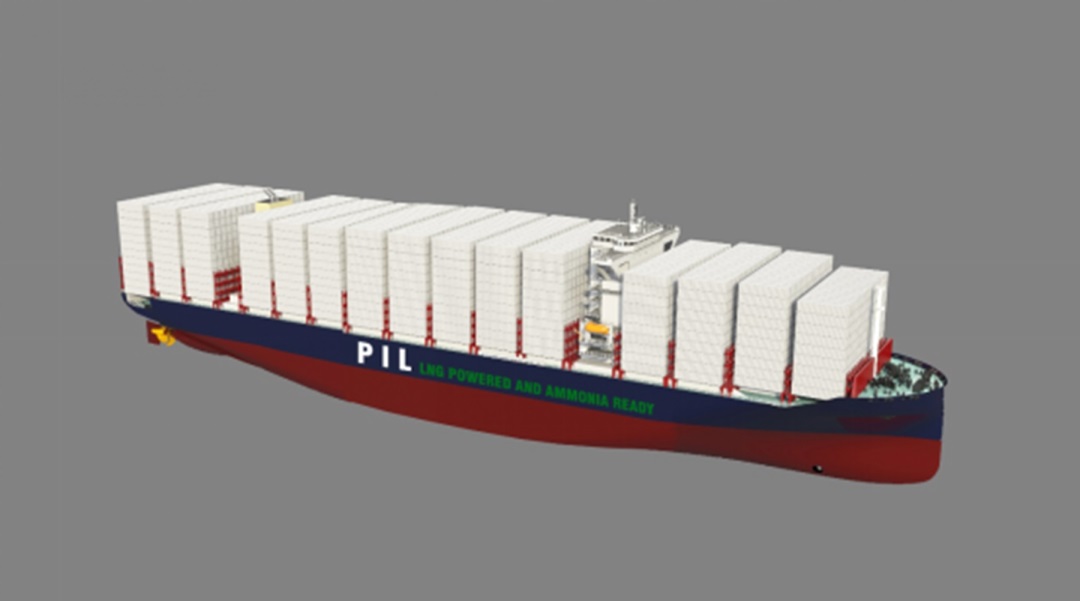Singapore’s Pacific International Lines said it has ordered four ammonia-ready LNG-powered containerships at China’s Yangzijiang Shipbuilding.
LNG Prime reported on June 29, citing shipbuilding sources, that PIL and Yangzijiang had signed a letter of intent for 8,000-teu ammonia-ready LNG-powered vessels. Sources said last week that the final order would follow “very soon”.
PIL announced the award of the contract for four vessels in a statement on Tuesday.
Also, these ships would each be equipped with an ammonia intermediate ready fuel tank, it said.
This makes it possible to retrofit the vessels to run on ammonia once the technology becomes commercially available.
The shipping firm said it would take delivery of the four ships progressively in 2025, but it did not reveal the price tag of the contract.
Looking at some similar contracts for containerships lately, PIL could pay around $120 million for each vessel.
Slashing emissions
Sources previously said these vessels would feature WinGD dual-fuel engines and GTT’s Mark III membrane system.
Yangzijiang said in a separate statement on Tuesday that it would equip the vessels with GTT’s tech and WinGD’s main dual-fuel engine with iCER technology.
The Chinese shipbuilder said the two firms had signed the deal during a virtual ceremony.
This contract award follows PIL’s order at China’s Jiangnan Shipyard to build four 14,000-teu LNG dual-fuel vessel announced in March this year.
Lars Kastrup, CEO of PIL, said that the company had decided to place the order for an additional four 8,000-teu LNG dual-fuel vessels for two key reasons.
“Firstly, this is part of our ongoing efforts to optimize and renew our assets for greater operational efficiency. The new vessels will complement our existing fleet and support us in the enhancement of our connectivity to better meet the needs of our customers worldwide,” Kastrup said.
“Secondly, we have identified LNG as a commercially viable transition fuel solution and the new vessels, which will once again be LNG dual-fuel and ammonia ready, will contribute towards achieving our decarbonization goal of attaining net zero carbon emission by 2050,” he added.

